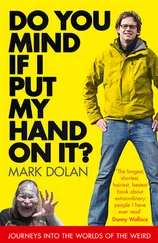Robert Monroe - Journeys out of the body, Practical Guidebook
Здесь есть возможность читать онлайн «Robert Monroe - Journeys out of the body, Practical Guidebook» весь текст электронной книги совершенно бесплатно (целиком полную версию без сокращений). В некоторых случаях можно слушать аудио, скачать через торрент в формате fb2 и присутствует краткое содержание. Жанр: Старинная литература, на английском языке. Описание произведения, (предисловие) а так же отзывы посетителей доступны на портале библиотеки ЛибКат.
- Название:Journeys out of the body, Practical Guidebook
- Автор:
- Жанр:
- Год:неизвестен
- ISBN:нет данных
- Рейтинг книги:5 / 5. Голосов: 1
-
Избранное:Добавить в избранное
- Отзывы:
-
Ваша оценка:
- 100
- 1
- 2
- 3
- 4
- 5
Journeys out of the body, Practical Guidebook: краткое содержание, описание и аннотация
Предлагаем к чтению аннотацию, описание, краткое содержание или предисловие (зависит от того, что написал сам автор книги «Journeys out of the body, Practical Guidebook»). Если вы не нашли необходимую информацию о книге — напишите в комментариях, мы постараемся отыскать её.
Journeys out of the body, Practical Guidebook — читать онлайн бесплатно полную книгу (весь текст) целиком
Ниже представлен текст книги, разбитый по страницам. Система сохранения места последней прочитанной страницы, позволяет с удобством читать онлайн бесплатно книгу «Journeys out of the body, Practical Guidebook», без необходимости каждый раз заново искать на чём Вы остановились. Поставьте закладку, и сможете в любой момент перейти на страницу, на которой закончили чтение.
Интервал:
Закладка:
FEAR METHOD
Immediately after waking from sleep, remain motionless, eyes closed. For three to five seconds, imagine something horrific and graveyard-related staying nearby, something graphic, macabre, out of the worst nightmare imaginable. If nothing happens, a different technique should be employed. However, acute fear may occur, most likely forcing the practitioner into the phase where a separation technique may be applied. Alternatively, vibrations or noise may arise and allow the use of other indirect techniques. A common problem with the use of this technique is that fear often makes the practitioner so uncomfortable in the phase that he desires nothing else than to return to wakefulness.
RECALLING THE PHASE STATE
Immediately after waking from sleep, remain motionless, eyes closed. For three to five seconds, recall the sensations that accompanied a previous phase experience. (This only works if the practitioner has achieved phase entrance in the past.) Either nothing will happen and a different technique should be used or these sensations will be recalled and separating from the body may be tried
- if it doesn’t occur spontaneously. Vibrations or noise may also arise during this technique, in which case listening in or straining the brain may be practiced.
BREATHING CONCENTRATION
Immediately after waking from sleep, remain motionless, eyes closed. For three to five seconds, focus on breathing; the rise and fall of the rib cage, the inflation and deflation of the lungs, the intake and escape of air. If no results occur, a different technique should be used. If vibrations, noise, or spontaneous separation occur, the practice of this technique should be intensified and used to its full advantage.
SELECTING THE RIGHT TECHNIQUES
The next step to mastering indirect techniques is choosing the right techniques that suit individual predispositions. There is no point in going for one technique or another only because they look interesting and because someone wrote a lot or spoke a lot about them. The choice should be based strictly upon what suits an individual practitioner.
Out of all of the enumerated primary indirect techniques, practically only straining the brain works easily and quickly for 95%
of practitioners. All other techniques work immediately for only about 25% to 50% of practitioners during initial training. However, after several training sessions, each technique yields results for 75%
of engaged practitioners.
One way or another, every practitioner should identify a certain set of techniques that works best. A set should consist of no less than three techniques; four or five is even better to allow more options and practical combinations. Non-working techniques should not be discarded wholesale by the individual because they afford an opportunity to achieve success through new, previously unresponsive experiences.
To ensure the correct selection of techniques, each should be separately practiced over a period of at least three days. To this end, one should experiment with each of the primary techniques for 2 to 10 minutes before falling asleep, or even during the day. It is good to choose at least one secondary technique practice. This regimen allows a precise determination of the techniques that will yield the best results for the practitioner. During the process of selecting personalized techniques, a practitioner learns and retains the techniques in an intimate, personal way, which positively affects how techniques are used during critical moments.
It is worth noting that the final selection of techniques should be varied. For example, choosing both straining the brain and straining the body without using muscles is pointless because they are practically one and the same. More often than not, they will both either work or not work. This is why techniques should involve various types of sensory perception: visual, audio, kinesthetic, vestibular, imaginary sense perception, and internal strain.
Remember that priorities and goals change with time, and that a technique that fell flat during initial attempts may unexpectedly prove valuable later on. Be flexible. No set of techniques should be carved in stone. In fact, the set may change several times over the first few weeks as the practitioner discovers what produces the best individual results.
To close this section, a list has been provided, detailing the most effective indirect techniques. This list was compiled with classroom data from the School of Out-of-Body Travel and may prove helpful in determining an effective set of indirect techniques.
The Most Effective Indirect Techniques at School of Out-of-Body Travel Seminars
Observing Images
15%
Phantom Wiggling
15%
Listening in
15%
Rotation
10%
Straining the Brain
5%
Straining the Body Without Using Muscles
5%
Forced Falling Asleep
5%
Mixture of Techniques
10%
Other Techniques
20%
SEPARATION TECHNIQUES
Let us begin with a totally shocking fact: during one-third of successful indirect entries into the phase, it is not necessary to perform any specific phase entry techniques, as separation techniques are immediately successful… This has been statistically proven at School of Out-of-Body Travel seminars and in the analyses of other sources. Conversely, an incorrect understanding of separation techniques may lead to undesirable consequences. It is possible for a practitioner to enter the phase state and be unable to separate from the body. Therefore, it is very important to understand how separation techniques work since they are often a key to success.
Interesting Fact!
Relatively often, a practitioner will try to employ separation techniques to no effect, however, he will later unexpectedly understand that he had been lying in a different position than he sensed that he was in, and in fact, it had only been necessary for him to stand up. This happens mostly among beginners and is indicative of an incorrect understanding of separation techniques.
At times a practitioner may only need to think about separation and it happens. This is a rarity, which explains the existence of a whole series of auxiliary techniques. The most important separation techniques are rolling out, getting up, climbing out, and levitation.
ROLLING OUT
While awakening, attempt to roll over to the edge of the bed or the wall without using any muscles. Don’t worry about falling out of bed, hitting the wall, or be concerned with the details of how this technique should feel. Just roll.
GETTING UP
Upon awakening, attempt to get out of bed without physical exertion. This should be performed in a way that is most comfortable for the practitioner.
CLIMBING OUT
While awakening, try to climb out of the body without using any muscles. This technique generally comes to mind when a partial separation has been achieved through the use of other techniques, or one part of the body has completely separated.
LEVITATION
Upon awakening, attempt to levitate upward, parallel to the bed.
While attempting to levitate, do not wonder how it should be accomplished; everyone intuitively knows how to levitate from their experiences in dreams.
FALLING OUT
Practically the same as levitation: upon awakening, try to sink down through the bed.
PULLING OUT
Here, upon awakening, try to exit the body through the head, as if escaping from a lidded cocoon.
BACKWARDS ROLL
Читать дальшеИнтервал:
Закладка:
Похожие книги на «Journeys out of the body, Practical Guidebook»
Представляем Вашему вниманию похожие книги на «Journeys out of the body, Practical Guidebook» списком для выбора. Мы отобрали схожую по названию и смыслу литературу в надежде предоставить читателям больше вариантов отыскать новые, интересные, ещё непрочитанные произведения.
Обсуждение, отзывы о книге «Journeys out of the body, Practical Guidebook» и просто собственные мнения читателей. Оставьте ваши комментарии, напишите, что Вы думаете о произведении, его смысле или главных героях. Укажите что конкретно понравилось, а что нет, и почему Вы так считаете.










